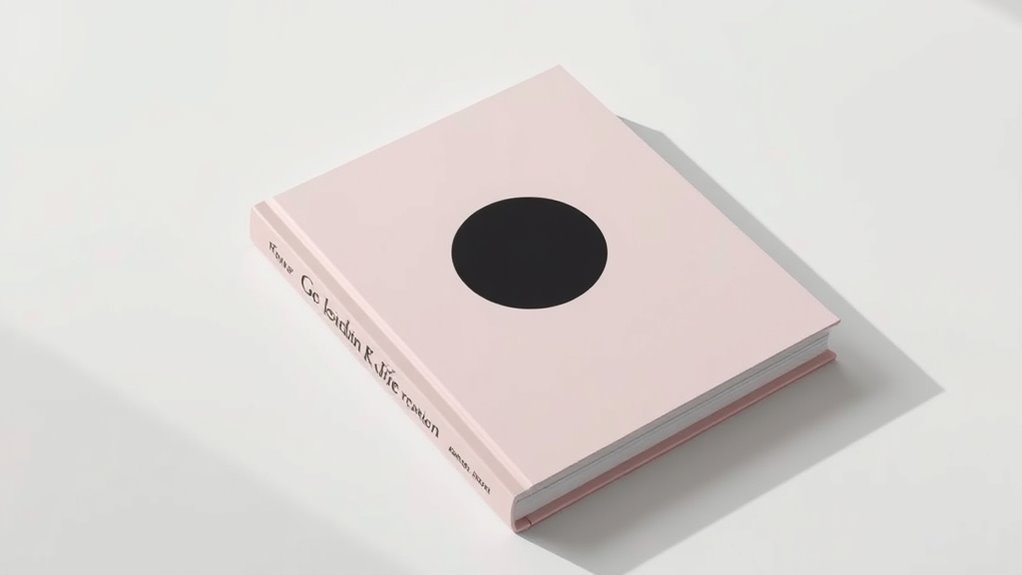Minimalist book cover design captures readers by using clean layouts, bold colors, and simple symbols that communicate genre and mood instantly. Strong visual hierarchy and symmetry create balance, making titles and images stand out. Limited color palettes and strategic typography enhance clarity and emotional impact. If you want your covers to stand out and resonate broadly, exploring more about minimalist principles will help you craft compelling designs that draw in audiences effortlessly.
Key Takeaways
- Use clean, uncluttered layouts with strong visual hierarchy to highlight key elements and guide reader attention effectively.
- Incorporate bold colors and striking typography to create visual impact and evoke specific emotions or genre cues.
- Employ symmetrical designs and ample negative space to achieve harmony, clarity, and a sophisticated aesthetic.
- Utilize simple symbols or abstract shapes that hint at story themes, enhancing genre recognition and narrative connection.
- Focus on core message by limiting color palettes and removing unnecessary details to create memorable, captivating covers.
The Impact of Simplicity on Visual Appeal
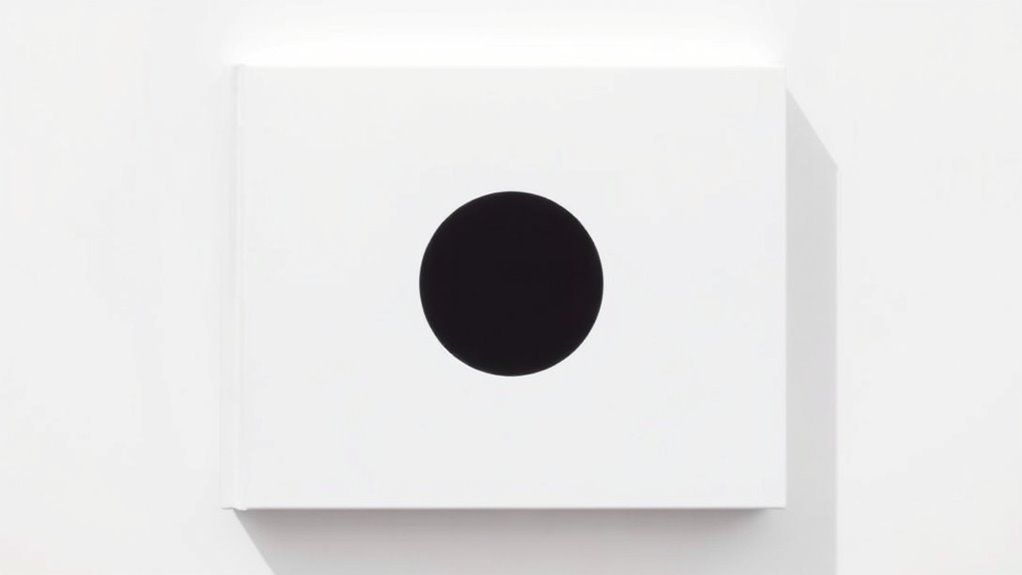
Simplicity in book cover design immediately captures attention and enhances visual appeal. When you focus on clean, uncluttered layouts, cover symmetry becomes a powerful tool to create balance and harmony, guiding the viewer’s eye effortlessly. Incorporating minimalist design principles can further streamline the visual message and improve overall reader engagement. A well-designed cover with symmetrical elements draws attention naturally, making it easier for readers to process and remember. Additionally, establishing a strong visual hierarchy helps prioritize key elements like the title, author, and imagery. This clarity ensures that the most important information stands out, making your cover more compelling at a glance. Recognizing the role of visual storytelling in minimalism can help convey complex themes through simple, impactful imagery. To enhance the authenticity and emotional connection, integrating rustic or vintage elements can deepen the visual narrative and resonate with viewers. Moreover, understanding how city and country living influence design choices can inspire unique creative approaches that appeal to diverse audiences. Including cultural influences further enriches the visual storytelling and broadens the cover’s appeal.
Core Principles of Minimalist Cover Design
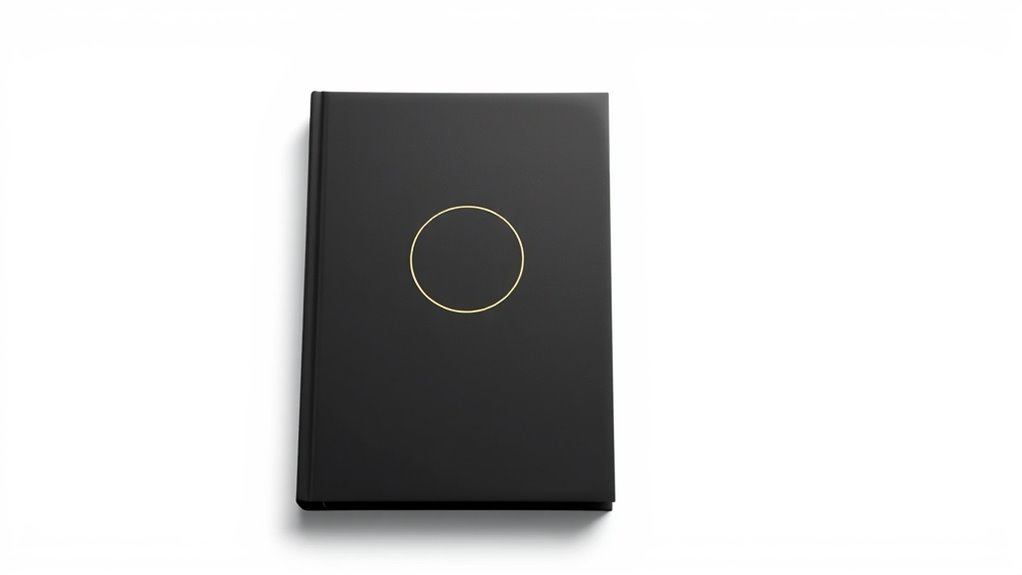
At the heart of minimalist cover design lies the principle of clarity. You should aim for a clean layout that directs attention without confusion. Incorporating cultural intelligence into your design process can help ensure your cover resonates across diverse audiences and avoids misinterpretation. Use design symmetry to create balance, making the cover visually harmonious and pleasing to the eye. Symmetry helps in guiding the viewer’s focus naturally and enhances the overall aesthetic. Negative space is equally crucial; it provides breathing room around elements, making your design feel uncluttered and sophisticated. By carefully managing negative space, you emphasize key features and create a sense of elegance. Additionally, understanding power consumption insights can inform your choices in digital design elements, ensuring your cover remains efficient and impactful. Considering visual hierarchy can also help prioritize elements effectively, drawing readers’ attention to the most important aspects of your cover design. Exploring tent camping locations can inspire thematic elements that complement your design’s mood and message. Incorporating design efficiency principles can further optimize your creative process, making your minimalist cover both effective and resource-conscious.
Color and Typography Choices in Minimalism
Your choice of bold colors can instantly grab attention and convey emotion with minimal elements. Incorporating visual appeal through thoughtful design choices enhances the overall impact of your cover. Selecting the right font is essential, as it sets the tone and enhances readability without clutter. A well-chosen font can also complement the color palette, creating harmony and reinforcing the message. Understanding the importance of design principles and objectives in minimalism ensures your cover communicates effectively. Additionally, blending textures like wood, metal, and fabrics can add depth and interest to your design. Recognizing the significance of contrast ratio can further elevate your cover’s visual impact, ensuring elements stand out appropriately. Together, color and typography work to create a powerful, clean statement on your cover.
Bold Color Impact
Bold colors and striking typography are essential tools in minimalist book cover design, instantly capturing attention and conveying mood with minimal elements.
A bold color creates a powerful visual impact, making your cover stand out on crowded shelves. When paired with vibrant contrast, it enhances readability and draws the eye to key details. Incorporating emotional expression through color choices can deepen the connection with potential readers.
You can use a single bold hue to evoke strong emotions—passion, calm, or intrigue—while keeping the design simple. The contrast between colors emphasizes the focal point, ensuring your message is clear and compelling. Additionally, selecting appropriate color technology can ensure that the colors remain vibrant across different print and digital formats. Utilizing color psychology can help in selecting hues that resonate with the target audience and evoke desired feelings. Moreover, understanding how color perception varies across mediums can assist in creating designs that maintain their impact regardless of display context.
Minimalist covers leverage these elements to communicate meaning quickly and effectively. By choosing a bold color palette with vibrant contrast, you create a memorable, impactful cover that invites readers to explore further.
Implementing color and typography choices effectively can also reflect the book’s theme and tone, helping to attract the right audience.
Font Selection Significance
Choosing the right font is essential in minimalist book cover design because it directly influences how your message is perceived. A clear typography hierarchy guides viewers’ eyes, emphasizing key elements like the title or author’s name.
Use font pairing strategies to create contrast and harmony; for example, combine a bold sans-serif with a delicate serif to enhance readability without clutter.
Simplicity is key—select fonts that complement each other and avoid overcomplicating the design. Your typography choices should reflect the book’s tone while remaining legible at various sizes.
Additionally, understanding the importance of attention to detail ensures that every aspect of your typography contributes to a cohesive and effective cover design.
How Minimalist Covers Convey Genre and Mood
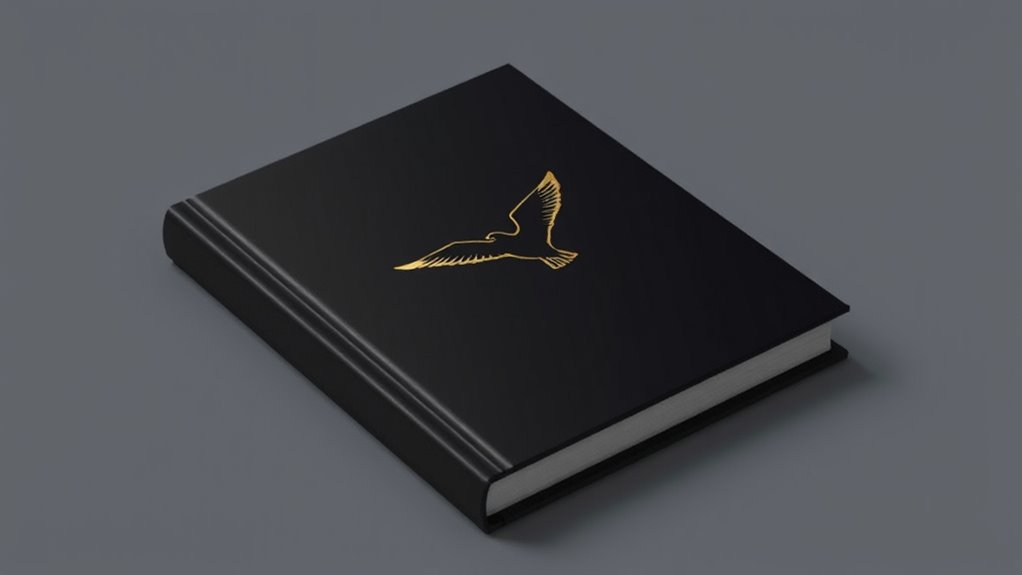
Minimalist covers use simple visual cues to suggest a book’s genre and mood, guiding your expectations quickly. Color choices evoke feelings—dark tones for mystery, bright hues for adventure—while symbols hint at story themes.
Visual Cues for Genre
Because minimalist book covers rely on simplicity, they often use specific visual cues to instantly communicate a book’s genre and mood. Through careful choice of symbols, you can evoke feelings and expectations without clutter.
For example, a lone feather might suggest delicacy or mystery, while bold, geometric shapes can hint at science fiction. Book cover symbolism plays a key role in shaping reader perception quickly, making the genre clear at a glance.
Minimalist designs utilize these visual cues to create an immediate connection, guiding potential readers toward the story’s tone and style without overwhelming them. This strategic use of symbols ensures the cover resonates with its target audience, making the genre unmistakable while maintaining an elegant, uncluttered look.
Color and Mood Impact
How does color influence the mood and genre of a minimalist book cover? Color psychology plays a crucial role, as it helps evoke specific emotions and set expectations. Bright reds and oranges often signal excitement or passion, suitable for thrillers or romances. Blues and greens evoke calmness or introspection, fitting for literary or contemplative works. The emotional resonance of a simple color palette guides your perception of the story’s tone. To illustrate:
| Color | Mood/Genre | Emotional Effect |
|---|---|---|
| Red | Passion, action | Excitement, urgency |
| Blue | Calm, mystery | Trust, serenity |
| Black | Sophistication, noir | Power, elegance |
| White | Purity, minimalism | Clarity, openness |
| Yellow | Optimism, energy | Happiness, alertness |
Minimalist covers leverage color to communicate genre and mood instantly.
Symbolism and Storytelling
Have you ever noticed how a single symbol or design element on a book cover can instantly hint at its story’s genre or mood? Minimalist covers rely on symbolism techniques to convey complex narrative elements with simplicity. A lone icon, abstract shape, or subtle detail can evoke mystery, romance, or suspense without clutter.
These visual cues serve as storytelling tools, giving readers insight into the book’s themes or tone at a glance. By carefully selecting symbols that resonate with the story, designers craft covers that communicate genre and mood efficiently. This minimalist approach invites curiosity, encouraging potential readers to explore the narrative behind the design.
Ultimately, effective symbolism transforms a simple cover into a compelling visual story, enthralling audiences through its narrative power.
Successful Examples of Minimalist Book Covers
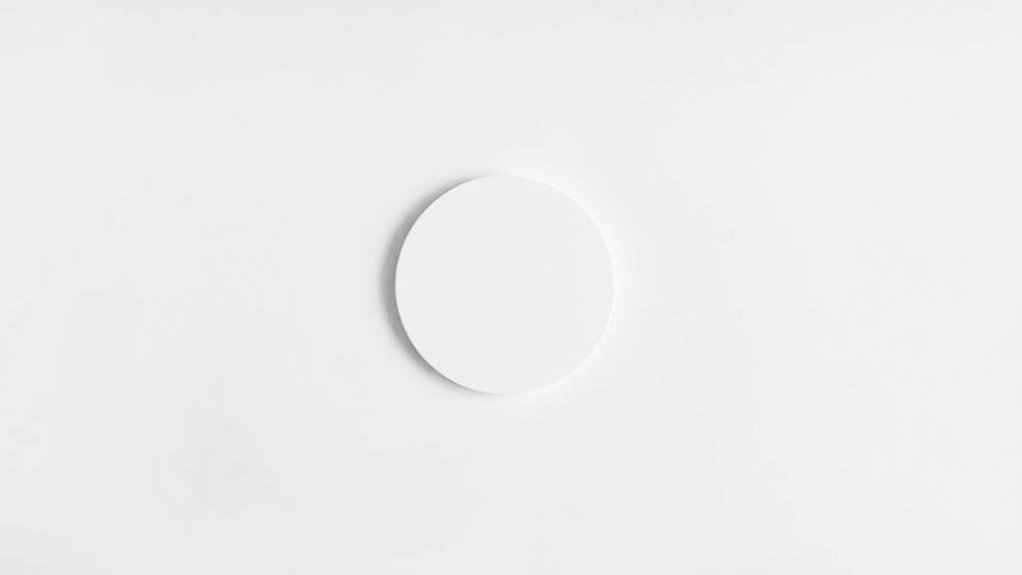
Minimalist book covers often stand out by using bold, simple visuals that immediately capture your attention. These designs exemplify current book cover trends, emphasizing clean lines, limited color palettes, and striking typography.
Minimalist covers use bold visuals and clean design to instantly capture interest.
An excellent example is “The Catcher in the Rye,” where the plain red background and simple font evoke nostalgia and curiosity, aligning with reader psychology to spark interest.
Another successful cover is “The Old Man and the Sea,” featuring a minimalistic illustration of a boat that hints at the story’s themes without clutter.
Such covers demonstrate how less can be more, making it easier for you to focus on the core message and emotional impact. These minimalist examples prove that simplicity not only enhances visual appeal but also deepens your connection with the book’s essence.
Tips for Creating Your Own Minimalist Book Cover
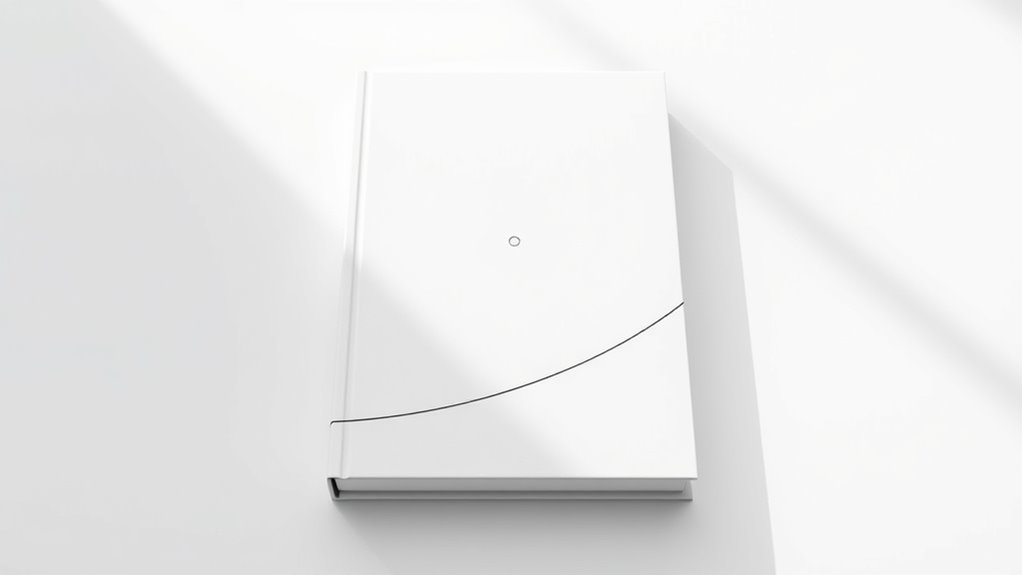
Creating a minimalist book cover starts with identifying the core message or theme you want to convey. Understanding the book cover evolution helps you appreciate how simplicity can stand out in a crowded market.
Focus on using minimalist art techniques like limited color palettes, simple shapes, and clean lines to communicate your message effectively. Avoid clutter by removing unnecessary details and emphasizing a single focal point.
Think about how negative space can enhance the design’s impact, making it more memorable. Choose typography carefully, ensuring it complements the overall aesthetic without overpowering the visual.
Frequently Asked Questions
How Does Minimalism Influence a Reader’S Initial Perception of a Book?
When you see a minimalist book cover, it quickly shapes your initial perception by creating a strong visual impact with clean, simple elements.
This approach often evokes curiosity and invites you to explore further.
Minimalism enhances emotional resonance by focusing your attention on key symbols or colors, making the book feel intriguing and sophisticated.
You’re more likely to be drawn in, sensing depth and meaning even before reading a single word.
Can Minimalism Be Effectively Used Across All Book Genres?
You might wonder if minimalism works across all book genres. While its simplicity can appeal broadly, genre versatility matters.
For literary fiction, minimalism can evoke emotion and sophistication. For thrillers, it creates intrigue. Understanding audience expectations is key.
If your readers prefer bold, detailed covers, minimalism mightn’t fit. But if you aim for clean, modern aesthetics, minimalism can effectively attract diverse audiences across genres.
What Are Common Mistakes to Avoid in Minimalist Cover Design?
When designing a minimalist cover, avoid overdesign pitfalls like cluttered elements that distract from your main message.
Choose your font carefully; a poor font selection can undermine simplicity and readability.
Keep your design focused, use ample white space, and resist the urge to add unnecessary details.
Staying mindful of these common mistakes helps guarantee your cover remains striking, clear, and effective in capturing potential readers’ attention.
How Does Minimalism Impact the Long-Term Shelf Appeal of a Book?
While subtle elegance often hints at timeless appeal, minimalism can boost your book’s long-term shelf presence if you focus on visual consistency and genre differentiation.
You might find that clean, simple covers stand out in a cluttered shelf, attracting curious eyes. Over time, this approach helps establish your brand, making your books recognizable and memorable.
This ensures they retain their charm and relevance long after their initial release.
What Tools or Software Are Best for Designing Minimalist Covers?
When designing minimalist covers, you’ll want tools that handle vector graphics and allow you to experiment with color palettes easily.
Adobe Illustrator is a top choice, offering precision with vector graphics and versatile color controls.
Canva also works well for simple designs, providing intuitive drag-and-drop features.
Both tools help you craft clean, impactful covers that stand out on shelves, ensuring your design remains sleek and memorable.
Conclusion
Embracing minimalism in your book cover design is like adding the perfect seasoning—less is often more, making your cover stand out and inviting curiosity. By focusing on simplicity, you create a visual melody that captures readers’ attention and hints at the story within. So, trust your instincts, keep it clean, and let your design speak volumes without saying too much. Remember, sometimes silence is the loudest voice in a crowded bookshelf.
